Update 13th September
Today some of the archaeology group, together with other members of the Wombwell Unit, visited the Wombwell History Society exhibition at St Mary’s Church. Students were interested in looking at the many old photos of Wombwell including video footage of the demolition one of the old cinemas.
Members of the group were interested in the old forms of transport, the Lundhill explosion and the photos of all the coal mines in the area. We learnt that the houses were provided with gardens so people could grow their own vegetables and there were certainly an impressive display of produce at one of the non-comformist churches in 1884.
There were even some pictures of Roy Kilner the famous cricketer who the vicar had told us about on our first visit to the church earlier in the year.
All agreed it was a very interesting exhibition and a great opportunity for the centre. A huge thank you to Joan and fellow members of the history society who made us most welcome and took the time to explain some of the exhibits to the learners.
The great news is that the Wombwell group and the Goldthorpe group have now joined together to do another WEA course called Moving on in Archaeology which will be running for the next 10 weeks.
Wombwell Celebrations 20/6/13
We were very lucky this week to be invited by the Mayor to the town hall in Barnsley to receive our certificates. Cllr Ken Richardson presented the learners with their certificates and took time over tea and biscuits to chat with the learners about they had discovered on their archaeological journey.
This celebration was also a chance to thank all the support staff from the centre who have been really enthusiastic throughout, Sarah our WEA volunteer who has helped out, Barnsley Museum staff who helped arrange the celebration and provided the learners with amazing opportunities throughout the course as well as all the staff at other heritage sites we have visited.
The group are looking forward to progressing to a new course in the autumn term.
Wombwell Field Visits:
Session 5: Cannon Hall Musuem
This was our last full session. It was an opportunity to be real archaeologists for the day and excavate in the kitchen gardens of Cannon Hall. The museum staff were fantastic and arranged a bed in the vegetable garden where we could excavate. They also provided all the tools we needed and chairs in case we needed a rest.
We found lots and lots of old penny coins which the learners though showed that the gardeners were very careless with their money and a few three penny bits. We also found some pieces of flower pot, pottery, glass ( probably from old greenhouses or cloches) bones and a tooth as well as clinker from the fires. The learners proved that not only were they very good at finding things, they were also quite good at identifying the materials the objects were made from.
We also did some field walking. The learners were brilliant at spotting even small pieces of pottery.
After lunch we did an artefacy trail which showed us items that would have been used in the house in the past 200 years including a butter churn and a flour shaker.
Session 4: The Coal Mining Musuem
We had a fantasic visit to the National Coal Mining Museum. Les our guide adapted the tour specially to take account of the learners needs making sure the tour was fully accessible to the students.
Although several of the learners were initially scared of going down into the pit once down they started to enjoy the tour and were extremely proud of themselves for sticking with it.
We discovered what it was like to have been a miner when all they had was candle light. We saw the development of mining technology and talked about what the life of a miner was like. In the museum the learners enjoyed watching the archive footage,finding out about the development of the safety lamp, the use of miners checks and accidents in the mine as well as seeing the reconstruction of the miners house. Many of them remember the houses in Wombwell being the same when they were younger and having see the mine and the artefacts on display could understand a little more about the lives of their fathers and brothers who had worked in the mines.
Session 3: Monk Bretton 23/5/13
The session today was dictated by the weather! Gales, rain and hail stones meant that our session at Monk Bretton Priorywas much shorter than had originally been hoped. Despite being only 15 minutes from the centre none of the learners had visited the site previously.
We began our tour by looking at the information board which had an illustration of what the Priory may have looked like when it was built in 1154. The learners had eye-spy sheets which formed the basis of our discussion. The learners spotted the faces on the entrance arch and the niche where the statue of St Mary Magelaine is thought to have stood. They were also able to identify where the coat of arms had been. Once inside the gate house I was impressed how quickly they spotted the fire places and were able to identify that this building had once contained an upper floor. One of the support workers pointed out the redding of the stone and remembered that at Conisbrough this was how we identified where there had once been hearths. The learners also spotted where the hinges for the doors would once have been.
We then moved down towards the Prior’s range and noted the fine stair case, fine fireplace on the first floor and some of the later 16th and 17th century rooms.
The learners then spotted the well in the cellar.
M then spotted the fine remaining windows in the refractory and we talked about the serving hatch and a cupboard possibly for the monks cutlery and spoons. We then looked at the kitchen with its well preserved drains before returning to the cloister to look at the inner parlour and chapter house. The chapter house contains two fine grave stones, one with a beautifully carved ornate cross. R said that this was his favourite part of the priory. In the centre of the inner parlour was a column ad we discussed how all the columns int he priory were like big lego bricks and not once piece of stone.
Finally we looked at the church itself. We used our phones to find north south east and west and talked about how the altar is always in the east end of the church (except at Wombwell!). We had to hide briefly in the arch in the south transept whilst we looked at the stairs to the monks dormitories to keep out of the rain!
As the heavens opened we ran past the administrative building and looked at the mill stones. It is in this building where the monks collected their rent from their tenant farmers.
I was really impressed the way all the learners took the bad weather in their stride and treated it as an adventure.
We retuned to the centre to dry out and have lunch and then the learners spent some time updating their scrapbooks and discussing what they had enjoyed most at the farm last week.
Finally we had a go at making thumb pots. We used cones and sticks to decorate them. There were some really impressive results.
Session 2: Heeley City Farm 16/5/13
Today we went to Heeley City Farm in Sheffield to do some experimental archaeology. We began the day by adding daub to the round house. We used old daub that had fallen off the round house during the winter and added water and straw to it to make it clay like. The students then spent an hour adding daub to the walls. The daub was much colder than we all expected and while we worked we talked about what it felt like “soft”, “cold”, “gritty”, “lumpy” and talked about what it would have been like to build and live in a round house in the iron age.
After lunch we made some willow plates. This was something all the learners had wanted to do from the very start of the course. It was harder than we all expected but we got some good results. We decided the plates we made would not be much use for food with a lot of gravy!
Weaving took a lot of concentration but the results were really good.
To finish up the day we looked round the farm. Nearly all the animals had young.
It was lovely to be outside all day and it gave us a lot to talk about about the way people in the past lived and how they used the resources around them.
Session 1: Conisbrough Castle 9/5/13
This was the first proper field session and the group were very excited as we boarded the 222 from Wombwell to Conisbrough. On arrival we met with the Milton Court group from Doncaster and after a few introductions we headed up into the castle through the Barbican to complete our eye-spy in the Inner Ward. We began by looking at the prison and latrine to the left of the gatehouse and the very impressive channel under the latrines in the private apartments. The students also spotted the corbels on the curtain wall which after several suggestions, including coat hooks, places to store food , floors etc we discovered were actually where the timbers for the roof would have been.
We also looked at the great hall and discussed how there would once have been a central hearth in the hall with the a service area and kitchen adjacent. In the kitchen the students inspected the large heath, now largely a hole in the wall and spotted where stone steps had been reused to make a drain.
Having looked round the inner ward some of the group went with the Doncaster group to inspect the models of the castle in the visitor centre while three students were determined explorers entered the keep and climbed to the top. On the way we looked into the cellar where food and armaments would have been kept and where the well allowed access to fresh water. We also saw the chapel and bedchamber. The chapel has a beautiful Norman dog tooth arch and circular quatrefoil windows. The students were also impressed by the large fireplace on the first floor and the wash basins.
- It was worth the climb.
After lunch we just had time to visit the beautiful St Peter’s church before getting the bus home.
Session 8: 300 objects
Lots of the group brought photos of themselves and friends and family. We talked about how we could tell from the photos what things people wore, where they might have lived ( looking at the backgrounds) and what they liked to do in their spare time. We also discussed how paper when it gets wet does not last very long so perhaps these artefacts would not last long in the archaeological record.This week was a really interesting session. Everyone had brought their own objects in and we talked about what those items told us about the person who owned them and how long we thought an object would last.
R brought along his Elvis figure. This was made of plastic and we thought that this would last for a long time. We wondered what people in the future would make of it if they did not know who Elvis was. A god? A toy? That made the group start to think about how we know what figures in the past represented and how we use our own experiences to make judgements.
P brought his headphone and tape player. We discussed how this might lead archaeologists to look at the technologies we have and from this try and work out what sort of life styles we made have led.
Int he second part of the session we were joined by Joan of the Wombwell History Society. She had come along with some photos to show us of the High Street as well as an old Heinz Bottle containing a message about a new building being erected in 1837 and a 300 year old building being pulled down.
The learners were all really interested in trying to work out where the old photos had been taken and what was there now.
This was one of my most favourite sessions so far. The group were really engaged and thought really carefully about the objects and pictures we looked at.
18th and 25th April – Rockley Furnace and some experimental archaeology
We have had a busy couple of weeks. On the 18th April we went on our first real fieldtrip to Rockley Furnace . We were met by Tegwen Roberts of EPIP who showed us the site and helped us to interpret it.
We began by walking from the engine house along the old wagonway to the Furnace.
Once at the furnace we looked at the casting arch and where the bellows would have been. We also went inside so we could clearly see the ‘throat’ of the furnace where the charcoal and iron ore would have been placed. Tegwen explained that the brickwork had no mortar because any water may have caused an explosion.
The learners were fascinated by the slag on the site. It clearly showed the charcoal as well as the iron that had been added.
Tegwen explained that the furnace would once have had a cover to protect the newly smelted iron and showed us where a second arch had been cut for an improved bellows when the furnace was being used to cast cannon.
Having looked all the way round the furnace and at the charging ramp we returned over a narrow bridge to the engine house.
We saw and smelt the wild garlic growing in the woodland that now occupies much of the site.
Back the engine house, built for a newcommen engine in 1813 the learners discovered that it was used to pump water from a mine, now capped, where ironstone had been mined. Unfortunately it was not in use very long as the firm went bankrupt.

The learners were interested in the erosion on the walls of the engine house. We talked about weathering on buildings.
All the learners had a fabulous day and were really excited ( and hungry!) when they returned to the centre.
This week we made some fabulous posters of our visit.
As we had been talking about how things were made we also did some experimental archaeology and made some butter.
Everyone agreed it was very tasty.
We also had a go at weaving. This was harder than it looked. We decided that people in the past were very clever and today we have life easy as we can go the the supermarkets and shops to buy our food and clothes.
28/3/13 – Bones
Today students at the University of Sheffield came to share their expertise with the group about human and animal bones. The group split into two and were able to spend some time looking at the different bones that make up the body and trying to reconstruct a sheep and human skeleton. The students from the university, Jenni, Lizzie and Alison had cleverly drawn an outline of sheep and a human onto
two huge sheets so that the students could relate more easily to where the bones went. Many of the students in the groups surprised us and themselves by their knowledge and ability to pick up information quickly about where the bones went. The session prompted many discussions and probing questions such as “How long will bones last?”, ” Why does horn not last as long?”, “Why is this hole in this bone?” and “what are the numbers on the bones?”.
The group were also keen to record what they had learnt on colouring sheets and some even had a go at drawing the skeletons.
A huge thank you to the university students who gave up their time to offer this opportunity to the group.
21/3/13 Cooper Gallery, Barnsley
This week we went to the Cooper Gallery in Barnsley to look at some artefacts found in the Barnsley region. As we walked from the bus station to the gallery it was great to see the students looking at the buildings and trying to spot date stones. They were even pointing out features to David Sutton Jones, the local WEA organiser, who joined us for the visit.
Once at the museum Jemma Conway and Joanne Mair showed us some artefacts dating from prehistory through to Victorian Times that have been found in the Barnsley area.
The first object was a stone age axe.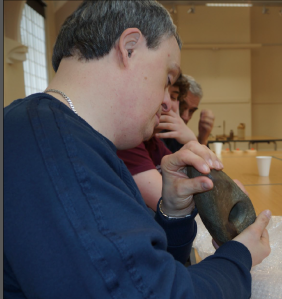
The students were intrigued as to how the hole in the middle of the axe had been made. They were thought that the person who used it must have been strong as they all found it heavy to lift.
Next we looked at a roman bracelet made from bronze. The metal had turned green over time due to the copper content. It was decorated with a simple pattern that looked a bit like a snake.
The bracelet was quite small and the group discussed as to whether it belonged to a girl or if roman woman were smaller than today as non of the ladies in the group could get it on.
We then looked at range of objects from Cannon Hall which we will be visiting in May.
Students examined a hot water bottle, butter pats, butter stamps, candle snuffs, an iron and a tally iron used for ironing ribbons and small objects.
The students found it fascinating to try and work out how these objects were used and we discussed whether men or women would have been the prime users of the objects.
Finally the group all chose their favourite object to draw and photograph.
A Wash Board
 A Stoneware hot water bottle
A Stoneware hot water bottle A Tally Iron.
A Tally Iron.
The group really enjoyed being allowed to handle and example these objects and it promoted a really good discussion about how things were used. A huge thank you to Jemma and Joanne for such an enjoyable session.
14/3/13 Recording our walk
We began this week by looking at the photos we had taken last week and comparing them to old photographs of Wombwell taken in the early 1900s and found in Brian Elliot’s book Darfield and Wombwell: Then and Now and Darfield and Wombwell: A second selection. Wombwell on the Net also has lots of interesting photos and information about Wombwell’s past.
The students were interested to see the similaries in the buildings that remain and the differences such as horse and carriages, trams and peoples outfits over 100 years ago.
After our discussion we made maps of our walk. One group worked on the photos we had taken while the others added old photos to another map. Both groups found it challenging to work out where the photos were on the map but were really pleased with their results.
This activity proved to be a really good prompt for a lively discussion about our walk and what we had found out.
7/3/13 – Wombwell Walk
This week we went for a walk around Wombwell. The aim was to see if we could identify old from new buildings and where possible see when some of the buildings were built. It was also the first chance for the group to try out the cameras, photography being one of the skills they said they would like to learn more about.

Precinct in Wombwell Town Centre. Students identified these buildings as being more modern than those on the other side of the road.
Having walked along the High Street we visited St Mary’s Church where the Rev Nigel Elliott showed us round. He told us there had been three churches on the site, the one there today dates from 1897 but there is a font in the church from the Norman Church and some foundations of that church are known to exist below the floor at the east end of the church. We also saw part of a column from the second church built in the 13th century. We also saw Roy Kilner’s cricket bat who played for Yorkshire and England.
Unusually the church has its’ altar at the West end of the church, although the East End, behind the screen still has an altar.
We continued our walk past the old Vicarage and cemetery. The students told me this was where the first school for people with learning difficulties was in Wombwell. They also told me how they had made the railings that now go round the cemetery.
Finally we looked at the Dearne and Dove Canal. Now it is little more than a ditch, the canal was formally used to transport coal from the mine and glass bottles for Bass and Guiness from bottle works in Pearson’s Field.
Next week we will be making a poster about our walk and comparing our photos with some historic photos of the area. We will also discover a bit more about the buildings we saw on our walk.
28/2/13 – Timelines
Our first session saw 10 very enthusiastic students begin their arcaheological journey together. As an icebreaker we all tried to draw what we thought an archaeologist might find. The group were full of brilliant ideas such as bottles, cups, plates, toys, money and bones and rubbish although we soon discovered these were not easy to draw!
We then talked about the jobs an archaeologist does and the tools an archaeologist might use. Students cut out a selection of tools for their own pictures of an archaeologist and then we spent time deciding why each of the tools chosen was important. Wheelbarrows for taking away the soil, trowels for digging, hi-vis vest and hard hats for safety, cameras and pencils for recording.
The group were really good at identifying the tools and enthusiastically participated in the discussion.
After a short break we looked at different time periods. The centre has a brilliant timeline of the week on the wall so we started with that. We then discussed the names of some of the key time periods used in archaeology. These were new to most of the learners. Having passed round some objects including some flint microliths, roman pottery and a fragment of a 19th century marmalade jar the leaners made their own timelines for their books. Each colour represents a different time period like the layers in the soil. The learners than added pictures of objects from those periods. This prompted a lot of discussion about local places and Wombwell in the past which was an excellent introduction to next weeks session.




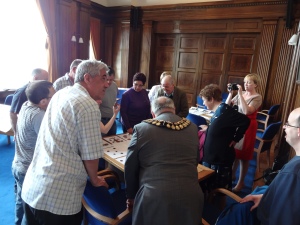
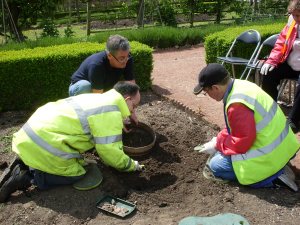

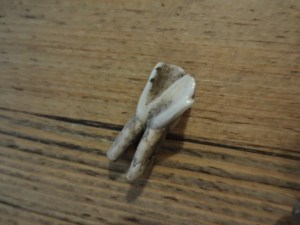

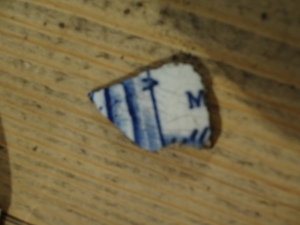
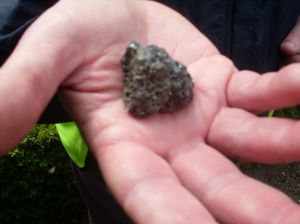


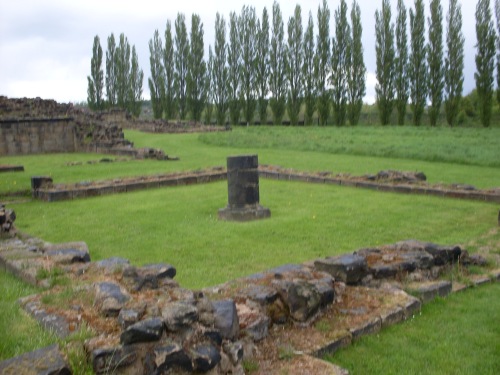
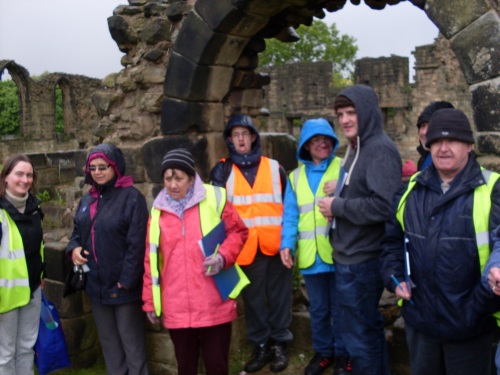









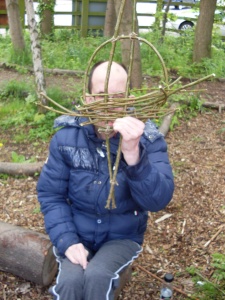
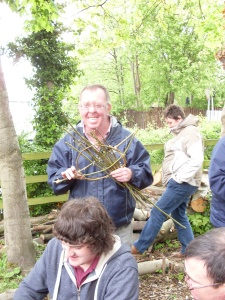











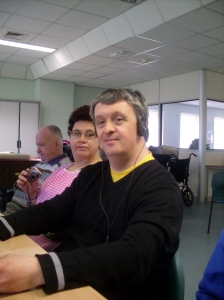
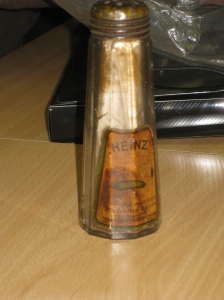





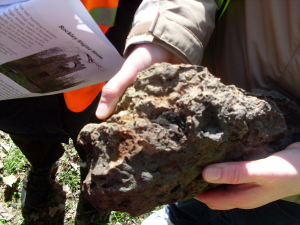


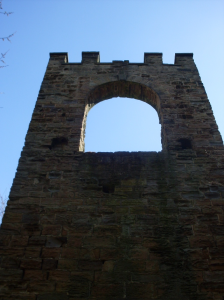








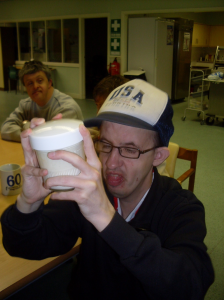






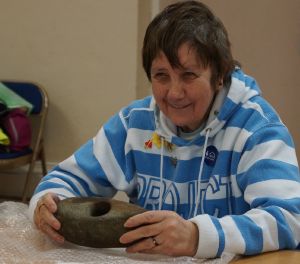

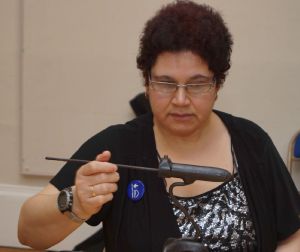
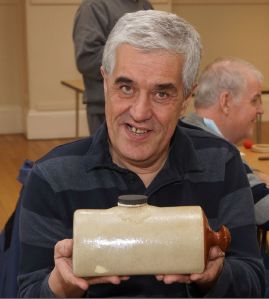




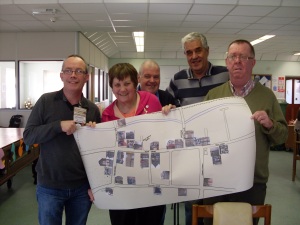

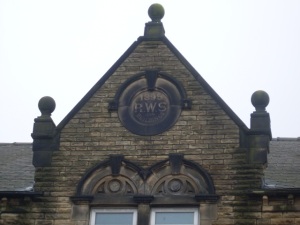
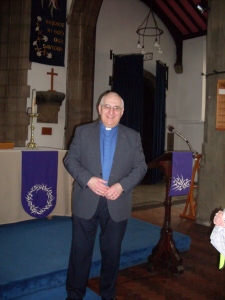


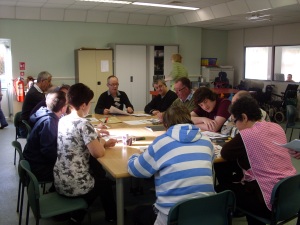
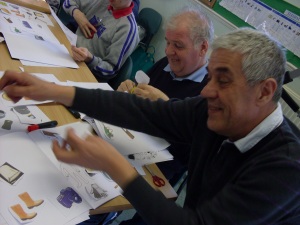


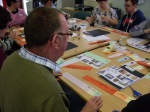


Pingback: New Year Round Up | digability